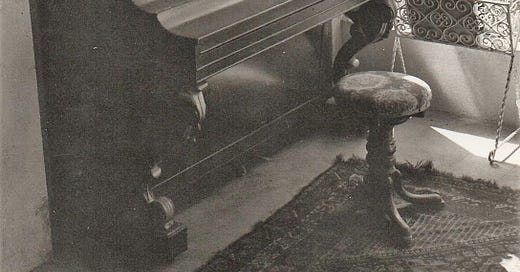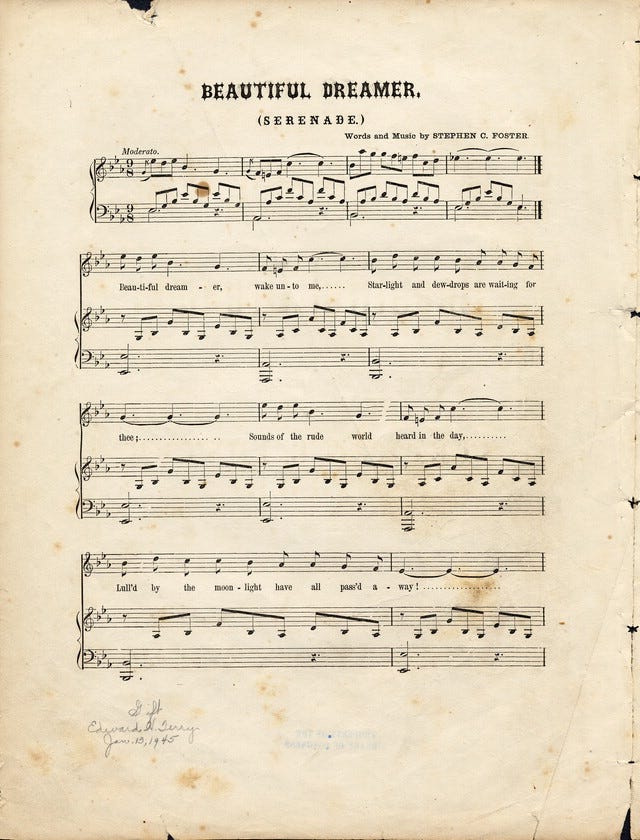Following yesterday’s brief history and thoughts about the American Dream, another musical Postcard, this one from 1864. Too many to choose from, but as I am still listening to early American song, this is another one by Stephen Foster to follow from the last Postcard (Hard Times).
Beautiful Dreamer was one of Foster’s ‘parlor ballads’. These tended to be sentimental songs about home, family, and love - and Beautiful Dreamer is no exception.[1] Yet listening to it now, Foster’s song takes on a meaning for these times, a lament about dreaming itself, its disappointments alongside our never-ending need to dream and dream again. As we must.
Finally, we can remember Foster as an American Dreamer from long ago whose life and lyrics echoed one another. Foster’s only source of income was the royalties from sales of sheet music – so that others might sing the dream in their parlors or elsewhere. Yet, although Foster’s songs were popular, he died penniless in New York City’s Bellevue Hospital. Beautiful Dreamers was published after his death.
Here is Sheryl Crow’s rendition, played as it once might have been. A plea from long ago to now.
[1] For an important feminist account of parlor music, see From the Parlor to the Bedroom: The Connection Between Women’s Parlor Music of the Late 19th Century/Early 20th Century and Bedroom Pop of the 21st Century | FUSION. “Parlor Music specifically refers to music “composed for domestic use from 1820 to World War I, consisting primarily of songs for voice and piano,” this music was “aimed at an amateur market and intended for performance in the home, primarily but not exclusively by females. As women were the primary performers of this music, some women began composing Parlor Songs to be premiered exclusively in their homes.”




